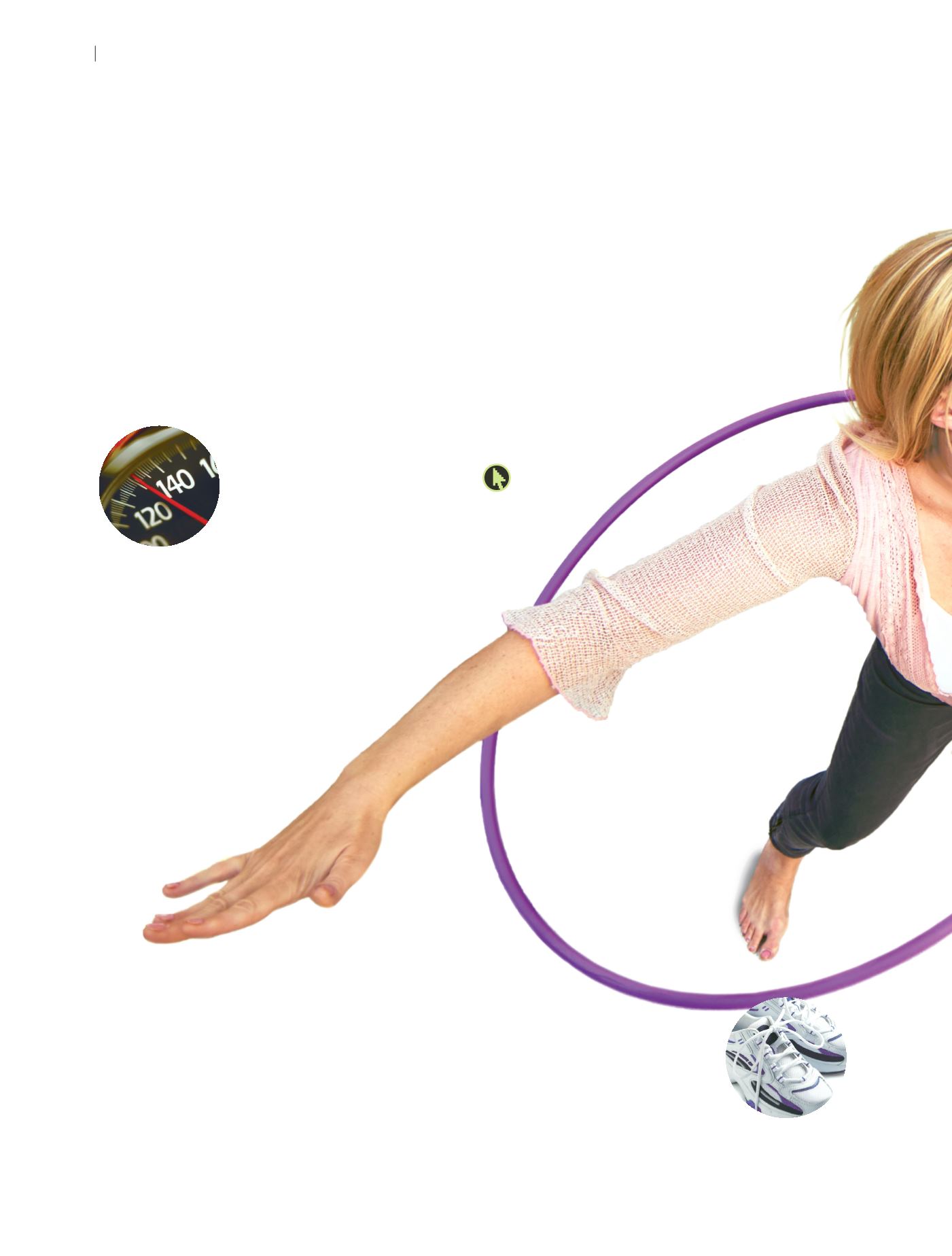

D E S T I N A T I O N
H E A L T H
4
F E B R U A R Y 2 0 1 7
R
oughly 2.5 billion times.
✦
That’s how often your heart will beat by the time you reach
age 70. It’s amazing, really. Nonstop, 24/7, the beat goes on—and on and on.
✦
Normally,
something with that kind of staying power would come with an owner’s manual—and a
good maintenance plan. We’re not born with either one of those, of course. But over time,
doctors have learned a lot about how the heart functions—and what we need to do to main-
tain a steady beat. Here are seven ways to help keep your ticker in tip-top shape.
We want to show
your heart some love.
Check out our calendar
on page 8 for the
times and locations
of our cholesterol
screenings.
1
Get to know your heart.
Several simple
tests can tell you a lot about what’s going
on with your heart and if you have risk
factors that may affect its health.
Blood cholesterol.
Cholesterol is a waxy
substance naturally produced by your
body. You can make more than you need,
though—especially if your diet’s high in
saturated fat and trans fat. To see where
your levels stand, the American Heart
Association (AHA) recommends adults
20 and older get their cholesterol checked
at least every four to six years.
Why it matters:
Excess cholesterol can
cause plaque to build up inside arteries
in the heart. Over time, that plaque can
harden and narrow arteries, which limits
the flow of oxygen-rich blood to the heart.
Plaque can also rupture, causing clots that
lead to heart attacks.
How testing helps:
A blood cholesterol
test reveals levels
of:
●
●
LDL , t h e
bad cholesterol
that clogs arteries. You want it to be low—
ideally below 100 mg/dL of blood.
●
●
HDL, the good cholesterol that may
help clear the arteries of LDL. The higher
your HDL, the better. A level of 60 mg/dL
or more actually helps protect against
heart disease.
●
●
Triglycerides, a type of fat in the
blood that may be associated with plaque
buildup when LDL levels are high or HDL
levels are low. A normal triglyceride level
is below 150 mg/dL.
●
●
Total cholesterol, a combination of
LDL, HDL and 20 percent of your triglyc-
erides. It’s best if that’s below 180 mg/dL.
Your doctor will look at your cholesterol
levels in relation to other factors—such as
your age and family medical history—to
determine if you’re at risk for heart disease.
If your cholesterol levels need improving,
changing your diet; getting more exercise;
and, in some cases, taking medication may
be recommended.
Blood pressure.
Blood pressure mea-
sures the force of blood traveling through
your arteries. It consists of two numbers:
the force when your heart is contracting
(systolic pressure) and the force when
your heart is resting between contractions
(diastolic pressure).
The AHA recommends adults 20 and
older have their blood pressure checked at
every health care visit or once every two
years if readings are normal—less
than 120/80 mm Hg.
Why it matters:
High
blood pressure can dam-
age your arteries,
leading to plaque
buildup, heart
attack and
heart failure.
And it can be
deadly. Accord-
ing to the AHA, if
you have high blood
pressure at age 50, your
life expectancy is about five
years less than that of someone without
the condition.
How testing helps:
You can have high
blood pressure without realizing it. A
reading is considered high if the systolic
number is 140 or higher or if diastolic
pressure is 90 or higher.
But even readings above 120/80 put
you at risk for the condition and deserve
attention. In both cases, lifestyle changes
may bring pressure down. Medication may
be needed, as well.
Body mass index (BMI) and waist
circumference.
BMI—a measurement of
your weight in relation to your height—
and your waist circumference can indicate
whether you’re at a healthy weight. Your
doctor can help you calculate these num-
bers. Alternatively, you can grab a tape
measure to determine your waist size and
use an online calculator to figure out your
BMI. Go to
www.morehealth.org/
bmi
.
Why it matters:
Excess weight forces your
heart to work harder.
It may also raise
your blood pressure and
have negative effects on your
cholesterol and triglycerides.
How testing helps:
Knowing if you’re
overweight or carrying too many pounds
around your middle may motivate you to
change your diet and exercise more—key
steps in losing weight.
For most people, a BMI between
25 and 29.9 is considered overweight.
Readings of 30 or higher indicate obesity.
Waist circumference reaches the dan-
ger zone at 35 inches for women and
40 inches for men.
2
Keep your heart fit.
Your heart is
a muscle. And like any muscle, it gets
stronger with exercise. That helps it pump
blood more efficiently. But the benefits
don’t stop there.
7 WAYS TO KEEP YOUR
















